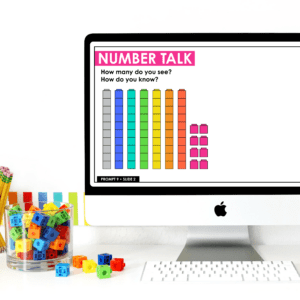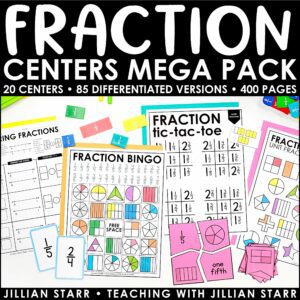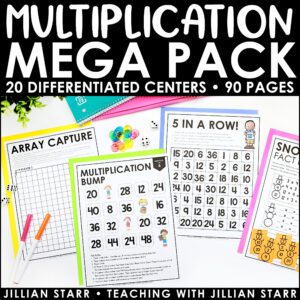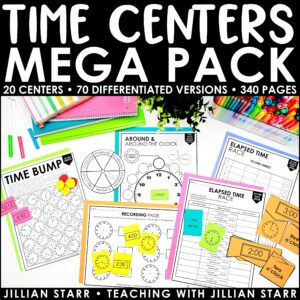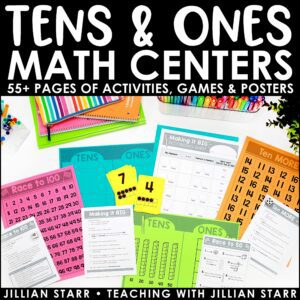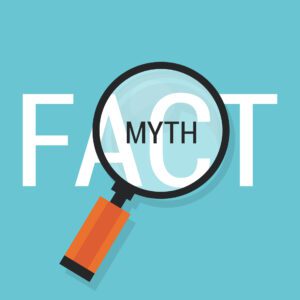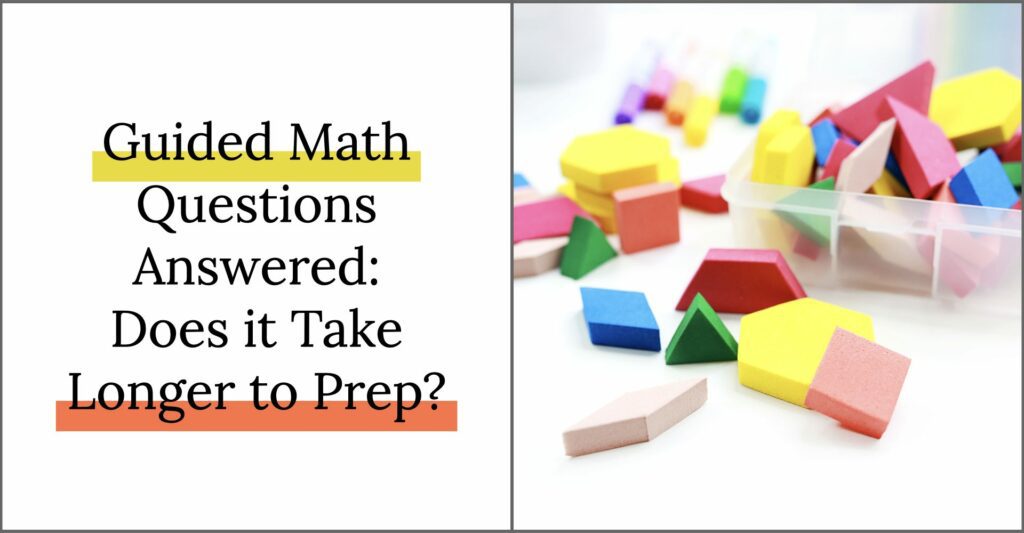
Welcome back to the Guided Math Questions Answered Series! Last time, we talked about the Guided Math framework, and how to make Guided Math work with your curriculum. Once teachers realize that they can actually use Guided Math with their students, the next question is always, “Does it take longer to plan and prep?”
It’s a good question, and I’m a huge proponent of teachers not adding more to their plates (because they’re usually already full). So, let’s dig into and find out if Guided Math takes more time to prep and plan.
Working with Your Curriculum
The nice thing about using our curriculum within the Guided Math framework is that it doesn’t require a lot of additional planning or prep time! Why? Because Guided Math is not differentiating every lesson, each and every day.
In Guided Math, we are familiarizing ourselves with each lesson in the manual like we normally would. We are prepping the centers, activities, and/or games that support that lesson like we normally would. The only difference is that we are teaching those lessons and using those materials at different times over the course of a unit.
This is sometimes hard to picture, so think of a staircase. Each step on your staircase is a lesson from your curriculum. You’ve already built the staircase (understanding and prepping the lessons). Now, instead of all of your students starting at the bottom and climbing up step by step at the same time, you have students start in different places on the staircase.
- Some of your students are going to start on step four of the staircase because they are already further along in their understanding.
- Some will start with the first step of the staircase but are ready to start climbing.
- Some students are going to sit tight on the landing and build some foundational skills before they start to make their way up.
What does that look like? Well, let’s say that our students who are further along in their understanding are ready for lesson four of our unit on coins. In this lesson, students will learn how to count a collection of coins that include quarters. We will familiarize ourselves with the lesson, and then prepare any of the following support materials:
- Journal prompts
- Games
- Activities
- Technology
- Assessment tools
When these students are ready to move on to the next lesson in our unit, we can hold onto all of these materials. They don’t go to waste. When our next group of students is ready for lesson four, we pull these materials back out and use them again. We may add in an extra scaffold here and there, but essentially, we are teaching the same lesson, just to a different group that will be ready to access it at a different time. We don’t have to re-prep or re-familiarize ourselves with the lesson. We’ve already done the leg work.
Intervention Prep Time
The only additional prep we may want to consider is for our students who need to build prerequisite skills before accessing the unit content. Sometimes this means spiraling back and reintroducing skills (and materials) from previous units, which will not require much prep. Other times it means seeking out supplemental materials to ensure students have a solid foundation to build from.
Does this take time? Some, sure! But hopefully, we would have intervention groups going in a traditional math model as well. So, does it take MORE time? No.
Building Routines
This is the one piece that I will say requires some additional time upfront with your students. I’m not talking about additional prep time, but actual time teaching your students. The first six weeks of school is all about building the routines and structures of a guided math workshop.
When we take the time to build strong routines and expectations with students, we are actually saving ourselves A LOT of time in the long run. This is because strong routines and structures mean:
- Fewer behaviors to manage because students are not off task or bored
- Fewer interruptions because students know what is expected
- Less time explaining each center because the routines are already in place.
If you are looking for more information about building your Guided Math Routines, you’re going to want to check out these two posts: How to Launch a Guided Math Model in 3 Easy Steps and Introduce Guided Math in 3 Proactive Steps (And Keep It Going all Year!)
To sum up, implementing a Guided Math Model doesn’t take MORE time. It means using the time you have differently.

